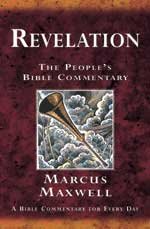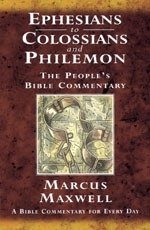Reflecting on the importance of space, as in my last post, leads
quite neatly into another church debate which has taken off on social
media. Or at least on Twitter, which is the one I tend to look at. In
these times of isolation, with worship being done at a distance, via
live streaming, conference software, and so on, can we do Holy
Communion at a distance? Is it OK for each of us to eat bread and sip
wine in our own home, and in doing so partake of the eucharist?
The predominant
answer seems to be no. A quite resounding no, in fact. Writing a few weeks ago in the Church Times, Angela Tilby referred to the
bishop of Western Louisiana, who had initially given permission for this form
of communion, but had withdrawn it, partly, apparently, because it
did not fit with the Episcopalian/Anglican eucharistic theology.
This came as a bit
of a surprise to me. It’s not that there is no Anglican theology of
the eucharist, so much as that there are so many Anglican theologies.
I’m sure an Anglican understanding of Communion could somewhere be
found which would allow such a practice. Of course, the Book of
Common Prayer is officially the gold standard of Anglican theology,
and therein should lie the definitive theology of the eucharist for
all good members of the Church of England, at least.
However, I seem
dimly to recall from long ago lectures that the said theology of the
BCP was debated at its first publication, and the length and volume
of contradictory scholarly treatments has only grown in the
succeeding centuries.
On the other hand,
all is not lost. I don’t think that most theological issues really
matter here. Is communion possible without a priest? Does a
substantive change take place in the bread and wine? Is consecration
effected by the priest alone as celebrant, or the whole congregation?
Does it occur at certain words in the eucharistic prayer, or is it a
process with a beginning and end, but no fixed point between? Is it a
re-enactment of the sacrifice of Christ, a simple mnemonic, a
bringing of the eternal act of atonement to bear on the discrete
celebration of each eucharist or summat else?
Does any of this
mean anything to the average worshipper?
Never mind. I’m
sure it’s irrelevant to the question in hand, which is, I am
convinced, primarily about space.
A eucharist takes
place when Christians gather together to share bread and wine in
memory of Christ. (With whatever embellishments our church tradition
deems necessary.) What do we mean, though, by “together”? I
suspect that in some sense, it means sharing a space. Here we need to
be careful. Communion in one’s living room, and communion in
Britain’s biggest cathedral (just over the river from my house) may
each be seen as obvious examples of a space which can be shared for
worship. The same might apply to a mass in St. Peter’s square or
one of those huge gatherings in parks for papal visits etc. These are
simple and obvious shared spaces.
What about spaces
which exist, essentially, only in the mind? I have sat in a church
hall, joining in a service which took place a good many metres away.
I watched the service on a TV, joined in the hymns (probably a bit
out of phase with the main body of worshippers, but who was to know?)
and received communion as part of the one service, despite the
barrier of walls and a car park.
There are certainly
plenty of churches where the kids and their carers are hived off into
another room, but who are linked by loudspeakers, or even actually
isolated in “children’s church” but who are welcome back to
communion as part of the gathered body. In a sense, they are, like
those of us in the church hall, seen as occupying the same worship
space, the same event.
The thing is, our
concept of space is not about purely physical phenomena. It is about
the perception of presence, of belonging. In daily life we frequently
extend our sense of personal space beyond our bodies – to encompass
our car, for instance, or our shopping trolley. And, of course,
online, we think and speak in spatial terms which are more than
simple metaphors. We “visit” websites, “enter chat rooms”
(are they still a thing?) And when I join in the act of worship at my
old church, via Zoom, I think of myself as being present in a real
way.
So, if we can share
in worship in an internet “virtual” space, why not share in
communion, which binds the body of Christ together, existing as it
does not in a physical space, but wherever Christ is acknowledged?
One answer might be
about bread and wine. Surely the elements have to be in the same
place to be blessed, and perhaps touched, and to be physically
broken, Surely it is the sharing in one bread which carries much
significance? Well, I don’t think so.
Some friends who
trained for ordination at Mirfield, that bastion of anglo-catholic
rectitude, recounted how surprised they were to find that the
principal, presiding at a small eucharist in his study, sat at the
opposite side of the room from the bead and wine. The words were
spoken, bread was eventually broken, but the action seemed to take
place at a thoroughly unseemly distance. Then again, think of those
mass masses, where huge baskets of bread are blessed without being
present on the communion table, or even of the many modest parish
churches where individual communion wafers are blessed and
distributed.
Is there a sort of
spatial limit beyond which consecration cannot take place? I suspect
there is not. What matters is surely the intention—that bread and
wine brought to the worship space (virtual or otherwise) should be
the means of grace in this sacrament.
So, in summary, if
we can join for worship, prayer and even hymnody, by Wi-Fi, it seems
to me logical to say that we also can share in the sacrament of holy
communion.
And if that’s not
heretical enough, I think one could make a similar case for doing the
same with a recorded service. If we can do it with spatial
separation, perhaps a temporal barrier might also be no obstacle. If
it is intended that those who join in, separated by space and time
are none the less included as they are included in Christ himself, it
seems likely that the grace of God could still be operational! But I
won’t push that suggestion further, as this post is already too
long.
One final thought.
On one level, this sort of debate is an in-house issue, a minor spat
between churchgoing types. On another, though, it is about how open
the body of Christ is. As unprecedented numbers log on to acts of
worship in our present predicament, do they see a church which is
fully functional and fully inclusive, or one which draws the line
between the worshipper and the heart of worship? If the eucharist is
indeed a converting ordinance, should it not be allowed to convert?
Even the converted probably stand in need of further conversion.
(Disclaimer - the illustration arrived on a social media stream. If it is copyright, I am happy to remove it!)
(Disclaimer - the illustration arrived on a social media stream. If it is copyright, I am happy to remove it!)


